El Salvador, a Central American country, boasts a rich and diverse culture shaped by
centuries of history, blending Indigenous traditions, Spanish colonial influences, and
modern developments. This cultural tapestry is evident in various aspects of daily life,
from clothing and food to arts and crafts, the film industry, and the economy. Here's an
overview of these elements:
 Traditional Clothing and Attire:
Traditional clothing in El Salvador is a beautiful blend of indigenous and Spanish colonial
influences, reflecting the country's rich cultural heritage. Women's traditional garments
include huipils, which are loose-fitting tunics with intricate hand-embroidered designs that
often symbolize the wearer's community, status, or history. These tunics are usually paired with
enaguas, colorful skirts that are woven with patterns depicting local flora and fauna. In rural
areas, especially among indigenous communities, these garments are still worn for festivals and
ceremonies. Men’s traditional clothing is simpler, often consisting of white cotton pants,
shirts, and wide-brimmed sombreros to protect them from the tropical sun. Although modern
fashion has taken over everyday life, traditional attire is still an essential aspect of
cultural identity, worn during national festivals, religious ceremonies, and other significant
events. It serves as a tangible link to El Salvador’s past, maintaining cultural continuity in a
rapidly modernizing society.
Traditional Clothing and Attire:
Traditional clothing in El Salvador is a beautiful blend of indigenous and Spanish colonial
influences, reflecting the country's rich cultural heritage. Women's traditional garments
include huipils, which are loose-fitting tunics with intricate hand-embroidered designs that
often symbolize the wearer's community, status, or history. These tunics are usually paired with
enaguas, colorful skirts that are woven with patterns depicting local flora and fauna. In rural
areas, especially among indigenous communities, these garments are still worn for festivals and
ceremonies. Men’s traditional clothing is simpler, often consisting of white cotton pants,
shirts, and wide-brimmed sombreros to protect them from the tropical sun. Although modern
fashion has taken over everyday life, traditional attire is still an essential aspect of
cultural identity, worn during national festivals, religious ceremonies, and other significant
events. It serves as a tangible link to El Salvador’s past, maintaining cultural continuity in a
rapidly modernizing society.
 Language and Literature:
Spanish is the official language of El Salvador and is spoken by the vast majority of its
population. However, remnants of indigenous languages such as Nahuatl are still spoken by small
groups, particularly in rural areas. The literature of El Salvador is deeply intertwined with
the country's turbulent history, marked by periods of social upheaval, revolution, and recovery.
One of the country’s most renowned poets, Roque Dalton, is celebrated for his politically
charged works that delve into the struggles of the working class and the fight against
injustice. His legacy continues to influence contemporary Salvadoran writers who explore themes
like migration, post-war trauma, and national identity. Claudia Lars, another key literary
figure, contributed extensively to Salvadoran poetry, focusing on the natural beauty of the
country and the resilience of its people. Salvadoran literature has a growing global presence,
with its authors gaining recognition for their vivid depictions of the human condition and
social realities of El Salvador.
Language and Literature:
Spanish is the official language of El Salvador and is spoken by the vast majority of its
population. However, remnants of indigenous languages such as Nahuatl are still spoken by small
groups, particularly in rural areas. The literature of El Salvador is deeply intertwined with
the country's turbulent history, marked by periods of social upheaval, revolution, and recovery.
One of the country’s most renowned poets, Roque Dalton, is celebrated for his politically
charged works that delve into the struggles of the working class and the fight against
injustice. His legacy continues to influence contemporary Salvadoran writers who explore themes
like migration, post-war trauma, and national identity. Claudia Lars, another key literary
figure, contributed extensively to Salvadoran poetry, focusing on the natural beauty of the
country and the resilience of its people. Salvadoran literature has a growing global presence,
with its authors gaining recognition for their vivid depictions of the human condition and
social realities of El Salvador.
 Music and Dance:
Music and dance are integral parts of Salvadoran culture, blending indigenous, African, and
Spanish influences. Traditional Salvadoran music often features instruments such as the marimba,
guitar, and flute, and is commonly heard during festivals and local celebrations. One of the
most popular musical genres is Cumbia, a rhythmic and energetic style that originated in
Colombia but has been adapted to Salvadoran tastes. Xuc, a national dance created by composer
Francisco Palaviccini, combines indigenous beats with Spanish melodies, and has become a
cultural symbol of El Salvador. The dance is performed during celebrations, with dancers wearing
colorful costumes that reflect the vibrancy of Salvadoran culture. Additionally, Punta music,
which originates from the Garifuna people, has also influenced Salvadoran musical traditions,
especially in coastal areas. In contemporary settings, Salvadorans, especially the younger
generation, are drawn to reggaeton, bachata, and Latin pop, which dominate the airwaves and
social gatherings. Traditional dances, including the Pasillo and Zapateado, continue to be
performed during important cultural festivals, preserving the country’s rich musical heritage.
Music and Dance:
Music and dance are integral parts of Salvadoran culture, blending indigenous, African, and
Spanish influences. Traditional Salvadoran music often features instruments such as the marimba,
guitar, and flute, and is commonly heard during festivals and local celebrations. One of the
most popular musical genres is Cumbia, a rhythmic and energetic style that originated in
Colombia but has been adapted to Salvadoran tastes. Xuc, a national dance created by composer
Francisco Palaviccini, combines indigenous beats with Spanish melodies, and has become a
cultural symbol of El Salvador. The dance is performed during celebrations, with dancers wearing
colorful costumes that reflect the vibrancy of Salvadoran culture. Additionally, Punta music,
which originates from the Garifuna people, has also influenced Salvadoran musical traditions,
especially in coastal areas. In contemporary settings, Salvadorans, especially the younger
generation, are drawn to reggaeton, bachata, and Latin pop, which dominate the airwaves and
social gatherings. Traditional dances, including the Pasillo and Zapateado, continue to be
performed during important cultural festivals, preserving the country’s rich musical heritage.
 Ceremonies and Festivals:
El Salvador is known for its vibrant festivals and ceremonies, many of which are deeply rooted
in religious and indigenous traditions. Fiestas Agostinas, one of the most significant national
holidays, takes place in early August to honor the country’s patron saint, the Divine Savior of
the World. The celebration includes religious processions, music, parades, and street fairs,
drawing people from all over the country to the capital, San Salvador. Another important event
is Semana Santa (Holy Week), during which Salvadorans commemorate the passion of Christ with
solemn processions, reenactments, and masses. Indigenous communities also celebrate festivals
such as La Calabiuza in Tonacatepeque, where people dress as mythical figures and parade through
the streets to celebrate their ancestors and traditions. Día de los Difuntos (Day of the Dead)
is another important holiday, where families honor their deceased loved ones by visiting
cemeteries and offering food, flowers, and prayers. These festivals provide Salvadorans with the
opportunity to celebrate their religious faith and cultural history, while also strengthening
community bonds.
Ceremonies and Festivals:
El Salvador is known for its vibrant festivals and ceremonies, many of which are deeply rooted
in religious and indigenous traditions. Fiestas Agostinas, one of the most significant national
holidays, takes place in early August to honor the country’s patron saint, the Divine Savior of
the World. The celebration includes religious processions, music, parades, and street fairs,
drawing people from all over the country to the capital, San Salvador. Another important event
is Semana Santa (Holy Week), during which Salvadorans commemorate the passion of Christ with
solemn processions, reenactments, and masses. Indigenous communities also celebrate festivals
such as La Calabiuza in Tonacatepeque, where people dress as mythical figures and parade through
the streets to celebrate their ancestors and traditions. Día de los Difuntos (Day of the Dead)
is another important holiday, where families honor their deceased loved ones by visiting
cemeteries and offering food, flowers, and prayers. These festivals provide Salvadorans with the
opportunity to celebrate their religious faith and cultural history, while also strengthening
community bonds.
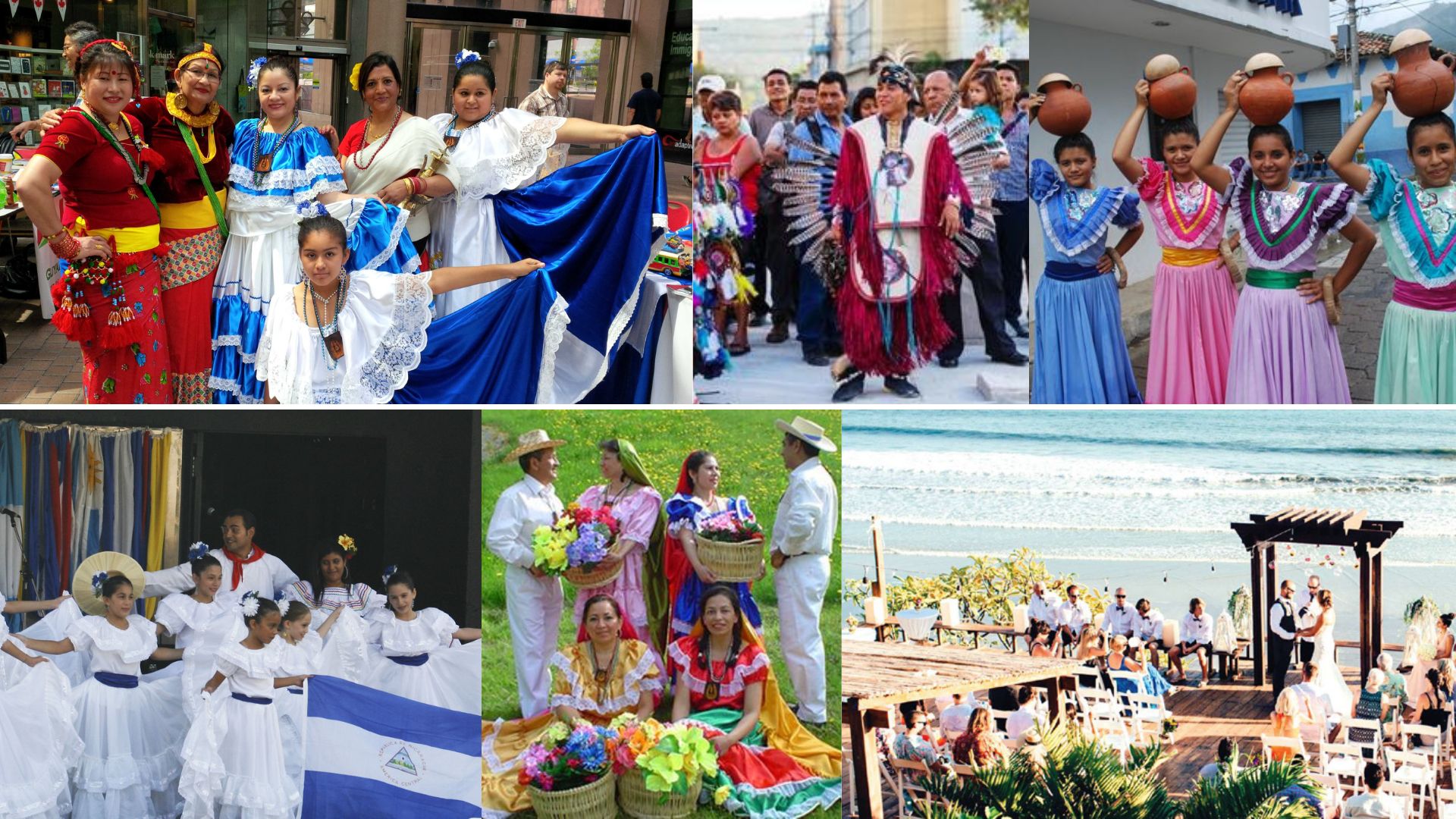
El Salvador Clothing
While Salvadorans in urban areas wear contemporary, Western-style clothing, traditional garments are still an important part of cultural celebrations. Women’s traditional dress includes huipils, embroidered tunics that reflect indigenous influences, and enaguas, colorful skirts. Men often wear simple cotton shirts and pants, topped with a sombrero. These traditional outfits are a significant part of national festivities and holidays, symbolizing El Salvador’s connection to its indigenous roots and Spanish colonial past. Clothing plays a key role in maintaining cultural identity during celebrations and important events.
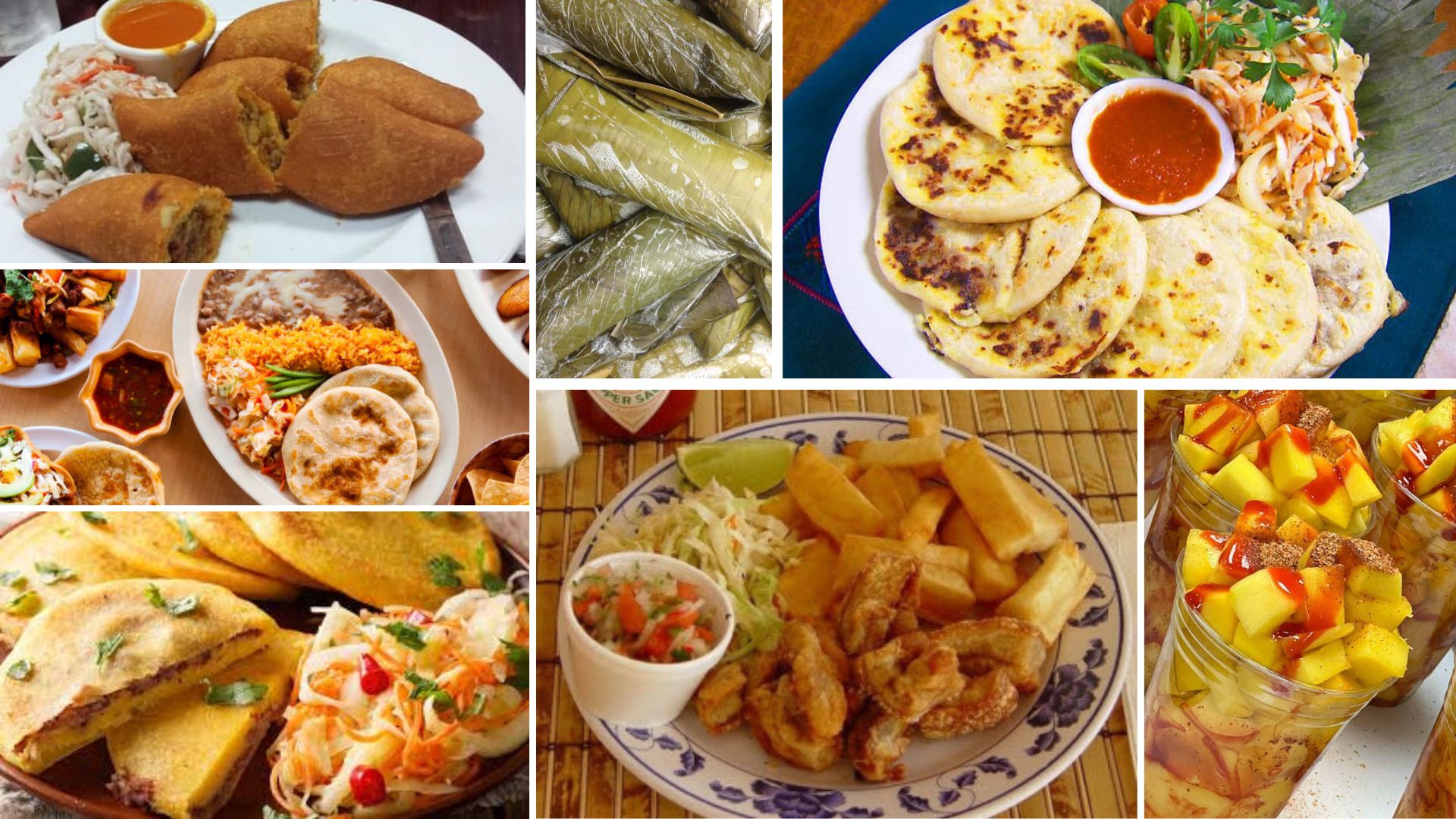
El Salvador Food
Salvadoran cuisine is renowned for its simplicity and heartiness, with pupusas being the most iconic dish. These thick corn tortillas are stuffed with various fillings like cheese, beans, or pork, and served with curtido (a tangy cabbage slaw) and tomato sauce. Other popular dishes include tamales (corn dough stuffed with meat and wrapped in banana leaves), yuca frita (fried cassava), and Sopa de Gallina India (hen soup). Salvadoran food is a blend of indigenous and Spanish influences, utilizing local ingredients like corn, beans, and tropical fruits. The cuisine reflects the country’s agricultural traditions and is a central part of Salvadoran culture.
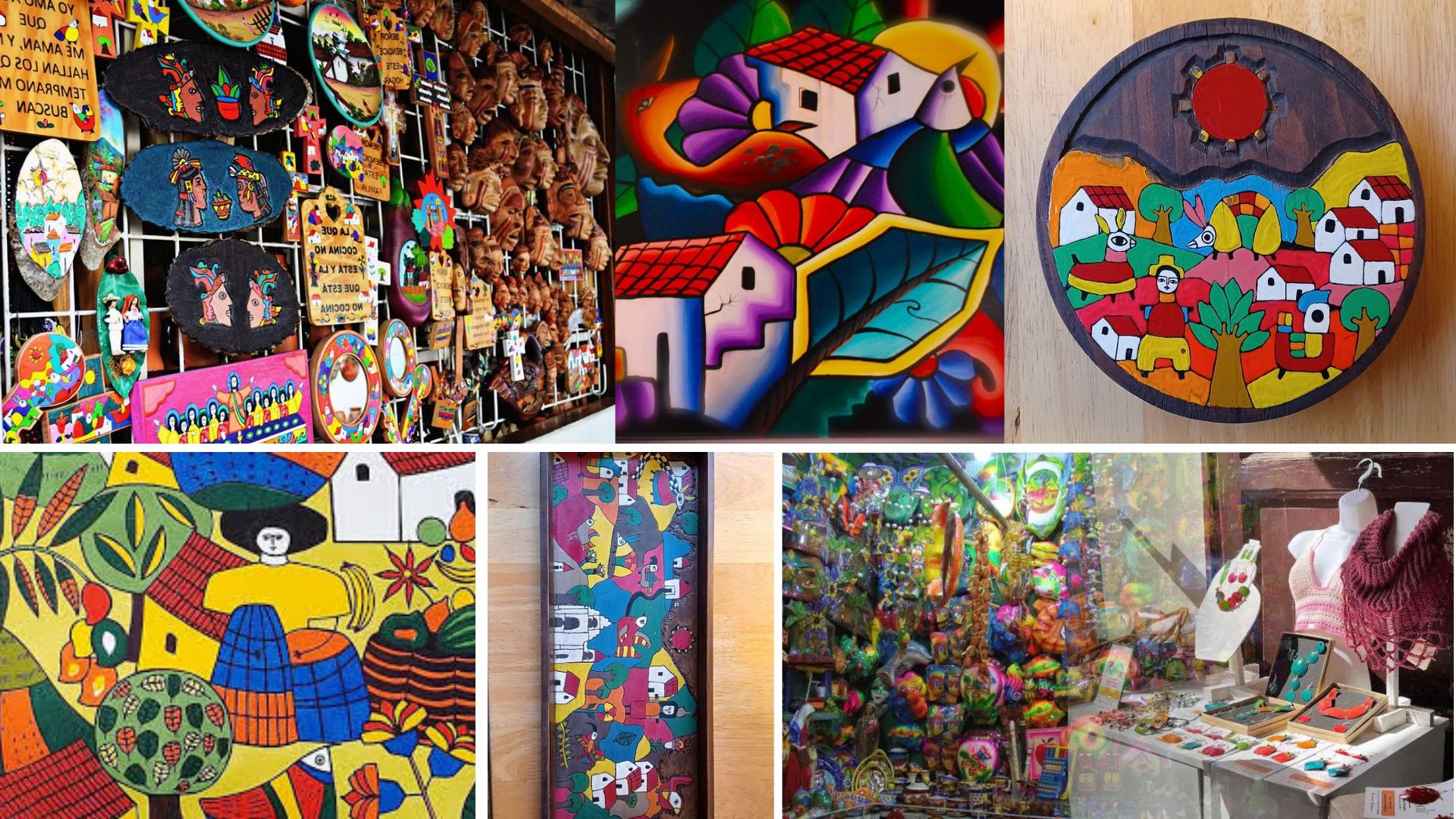
El Salvador Arts and Crafts
Arts and crafts in El Salvador are a vibrant part of its cultural heritage, with many artisans drawing inspiration from the country’s indigenous and colonial history. Naïf art, a folk painting style known for its colorful depictions of rural life, is one of El Salvador’s most famous art forms, especially in the town of La Palma. Salvadoran crafts also include textiles, ceramics, and hand-carved wooden items, all featuring intricate designs and vivid colors. Artisans often sell their goods in local markets, and their work is an important expression of the country’s cultural identity as well as a source of income for rural communities.
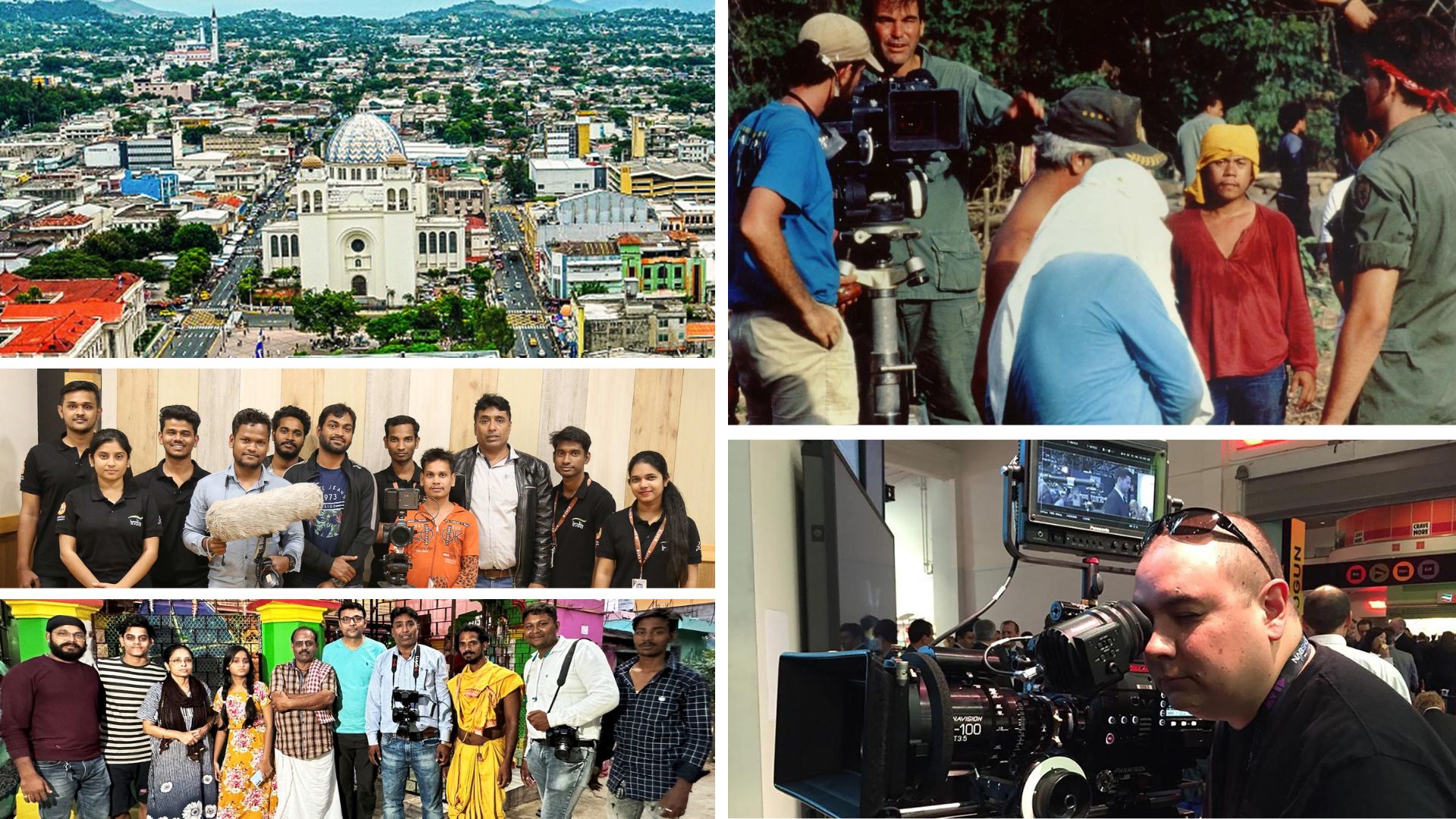
El Salvador Film Industry
Although still developing, El Salvador’s film industry has produced several impactful works that address the country’s complex social and political history. Documentaries and films often focus on themes like migration, war, and identity. Filmmakers like Tatiana Huezo have gained international acclaim for their powerful depictions of life during and after El Salvador’s civil war. The film industry in El Salvador is small, but there is growing interest in promoting local talent and showcasing Salvadoran stories at international film festivals, contributing to the country’s cultural narrative on the global stage.
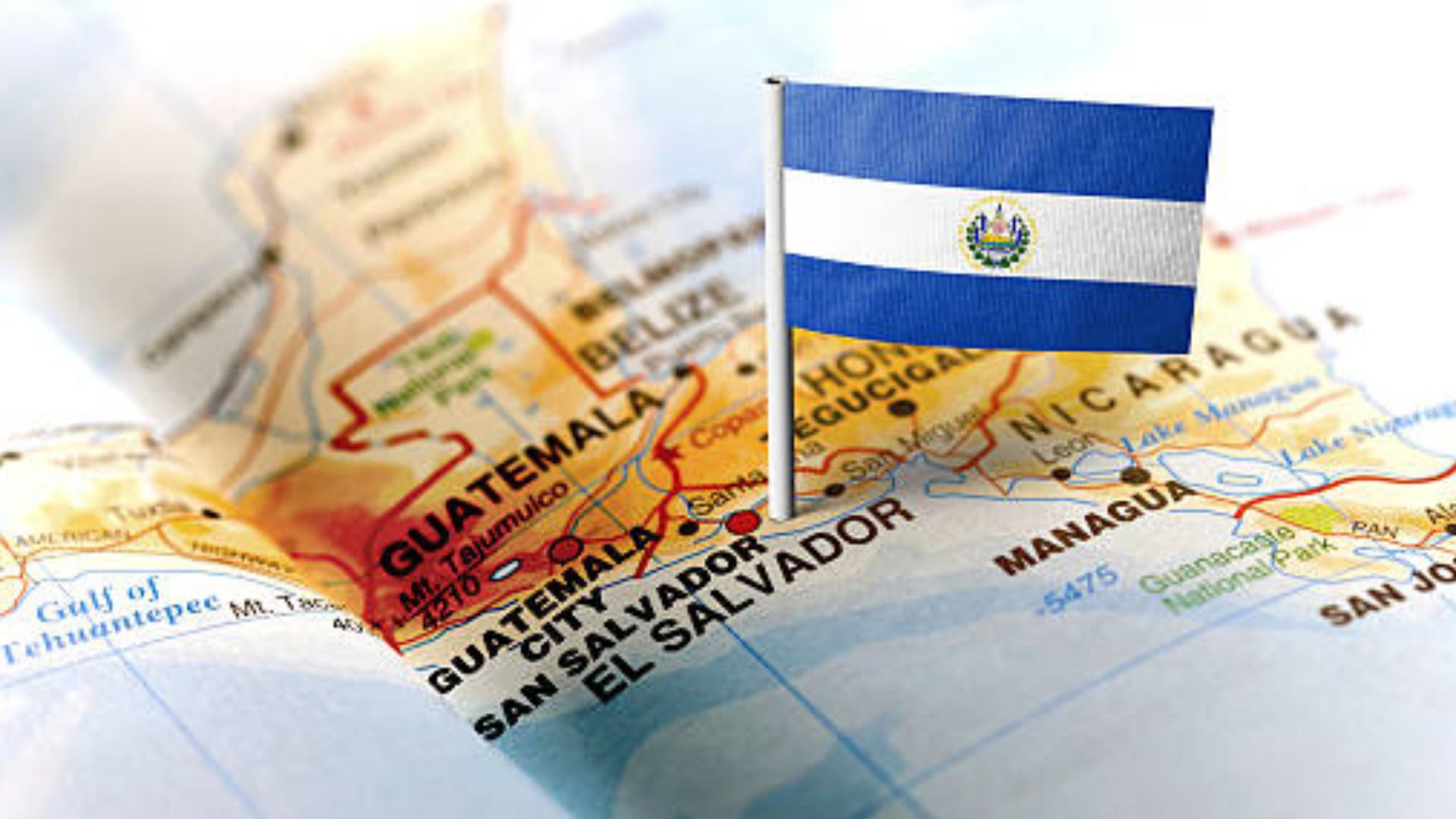
El Salvador Economy
El Salvador has the smallest economy in Central America but relies heavily on remittances from Salvadorans living abroad, especially in the United States. Agriculture, particularly the production of coffee, sugar, and textiles, plays a key role in the economy, though the maquiladora (assembly plant) sector has become increasingly important, producing goods for export. Tourism is growing, with El Salvador’s beaches and volcanic landscapes attracting more visitors. In recent years, the country made headlines by adopting Bitcoin as legal tender, in an effort to modernize the economy and reduce reliance on remittances. Despite these advancements, El Salvador faces ongoing challenges, including gang violence, poverty, and limited access to education and healthcare.